General accounting
III. 9. Personal accounting in the booklet of our checkbook: why the tally of cash is insufficient
Video
With this lesson, we enter into the nuts and bolts of accounting. In order to understand what double-entry accounting is all about, we begin with a look at how we manage our own personal checkbook.
In our personal checkbook booklet, we do something which is akin to single-entry accounting: we record checks as we write them, and keep track of our ongoing balance at the bank.
Let's see how it can lead to difficulties.
Here is the usual layout of a page of our checkbook booklet. The five columns are: number, date, description, amount, and current balance.
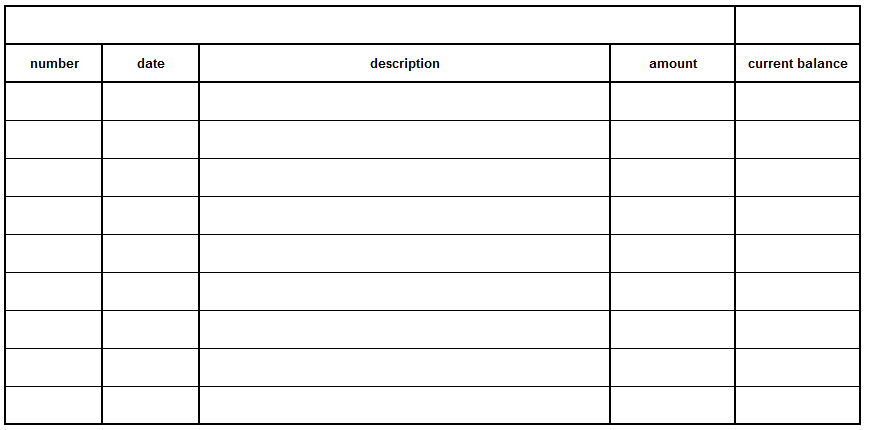
When we open a new booklet, first of all we report the previous balance. Let's suppose it is 250€.
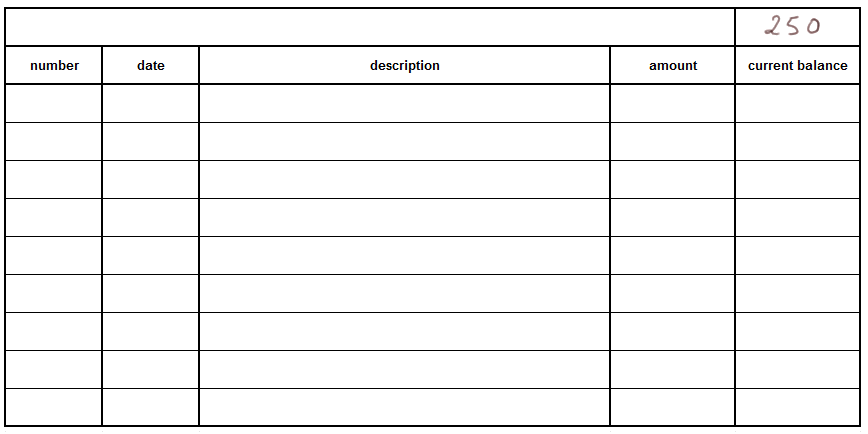
Then we record checks, as we write them, and the ongoing balances:
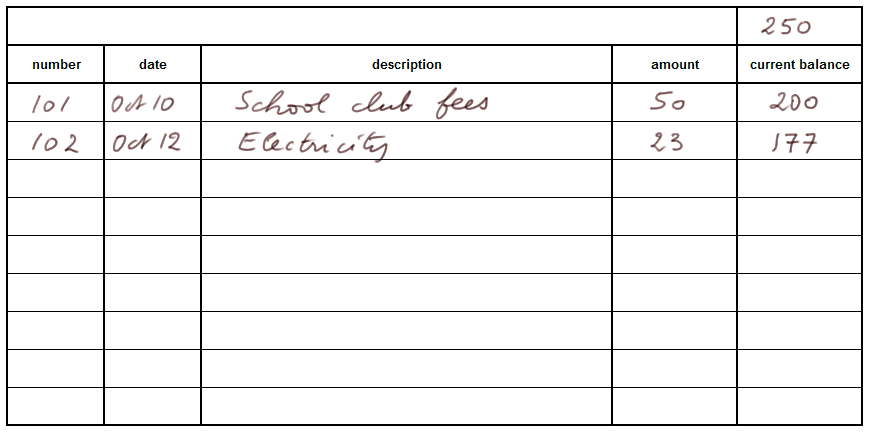
A non standard entry: money from Gran'ma
Suppose, on October 14th, our grandmother gives us 60€. And we can put it right now in our own bank account.
The booklet is not exactly designed for that, but it's no problem to make an entry on the line after cheque n°102, and put 60€ in the column "amount", specifying with a + sign that it is money to be added to the balance.
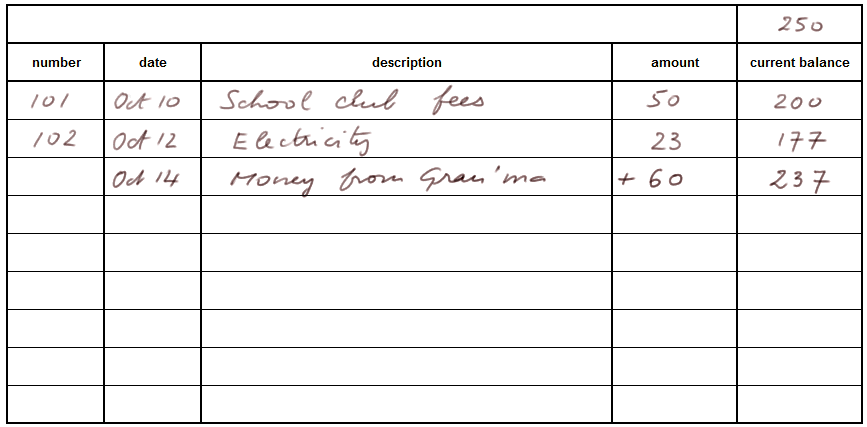
Then we can continue writing and recording cheques.
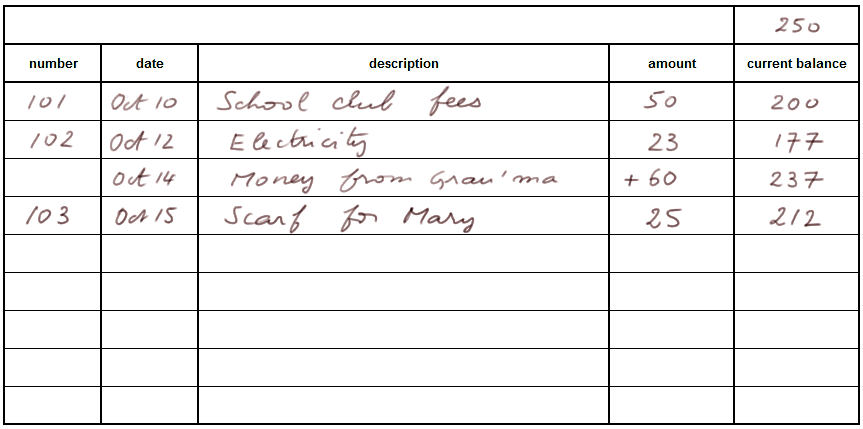
Now comes another non standard entry: On October 16th, we do some work for our friend Joe, amounting to 80€, but he will only pay us at the end of the month.
Can we treat this entry like the 60€ which came from Gran'ma?
Answer: No.
Indeed if on the line beneath cheque n°103, we were to write +80€ in the amount column, and therefore 292€ in the current balance column, we would produce a wrong view of what we have at the bank.
But if we make no note whatsoever, we overlook the fact that somehow new value has come into what we own.
So we make a note in the margin : "will be paid at the end of the month"
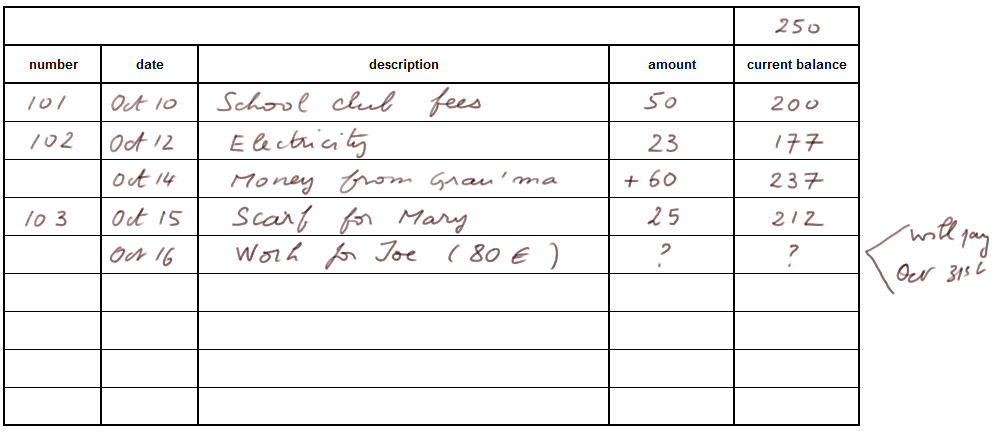
Let's stress the problem with another example: suppose, on October 20th, we have to pay the rent to our landlord, 250€. We don't have the money at the bank. If the landlord cashed the cheque right away, it would bounce.
So we ask the landlord to hold on to the cheque until the end of the month, because then we know that we will have the money (since Joe will have paid us).
In the meantime, we make another note: "cheque n°104 will be cashed and the corresponding money will leave our balance only at the end of the month"
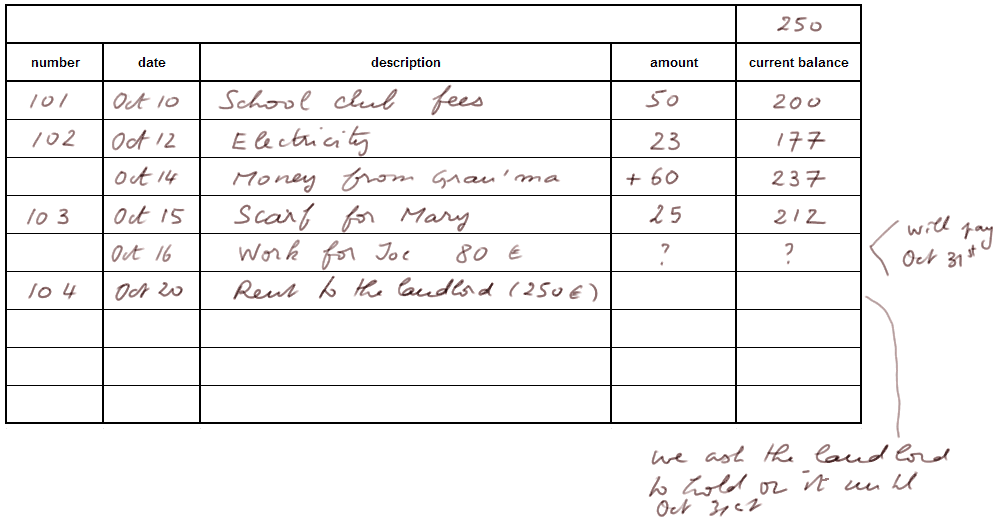
Let's step back and look at what we've done: sometimes we pay or receive money, in these cases the recordings in the booklet are fine. And sometimes we receive or give out value, but not money yet, in which case we cannot record the amounts in the amount column, nor change the current balance.
All we do then is make an entry, leave the last two columns empty, and make a note in the margin: money will come in, or money will leave, at such and such date.
Italian merchants, in the XIIIth and XIVth centuries in Northern Italy, had exactly the same problem. Sometimes they received promises. It was value, but not money. This is particularly true since - you will remember - this was the time of the invention of the bill of exchange, which was much more convenient and safe a means of payment than precious metals (the real money of the times).
Merchants receiving such IOU's would send them to their bankers. And bankers would operate among each other some sort of "clearinghouse", to compute how much money was in the account of each merchant/client, taking into account the IOU's it had received as well as the IOU's it had written to other merchants.
What the Italian merchants did to record their IOU's which were not money, was very simple: they recorded value coming in, in the form of IOU's, from clients, on another page than the page for their tally of cash. And they did the same for the IOU's they had written themselves.
Next lesson, we shall see how these other pages were kept and operated.



